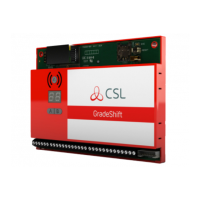ISDN (Integrated System Digital Network)
The digital ISDN is a communication network where the line from the exchange
and the service supplied to the subscriber is ‘digital’, i.e. not ‘analogue’. An
ISDN line can carry several calls simultaneously.
A ‘primary rate’ or ISDN30 line can carry the equivalent of up to thirty simultane-
ous calls. This type of digital teltephone line normally connects directly to a
PABX telephone exchange. See Fig 18.
A ‘basic rate’ or ISDN2 line can carry the equivalent of two simultaneous calls.
An ISDN line is always terminated at the users premises by an NTP (Network
Termination Point) which is provided by the telecoms Service Provider. The NTP
is a socket or connection where the users equipment can be connected.
In many cases, the ISDN NTP operates using power supplied from the ex-
change equipment via the ISDN telephone line, however some types of NTP
may require a connection to the mains supply at the users premises, e.g.
Business & Home Highway.
Where the NTP is mains powered and it is not battery backed-up then the line
to the DualCom may fail in the event of a mains failure. This may make this
type of telephone connection unsuitable for DualCom.
PABX with Analogue extension
Fig 18
37
PABX (Private Automatic Branch Exchange)

